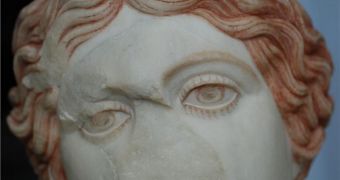A group of investigators from the University of Southampton (USouthampton) announced recently that they would develop and perfect a new imaging system for looking at ancient artifacts within a year. The technique will be used to gain more insight into the history underlying these objects, some of which have only been marginally understood. The group of investigators behind the new work is based at the School of Electronics and Computer Science (ECS), and is led by expert Dr Kirk Martinez.
Another section of the group is led by USouthampton School of Humanities scientist Dr Graeme Earl, AlphaGalileo reports. The new technology the collaboration is developing will basically focus on digitizing the objects that need studying, so that researchers could have access to their remarkable features without having to actually hold the artifact. This will avoid the precious objects being hit or damaged even further, and will also allow for multiple teams around the world to work on the same project together, without actually being in the same room.
The digitization method, which is aimed at both objects and documents, will be called the Reflectance Transformation Imaging (RTI) System for Ancient Documentary Artifacts. “For example, we are going to take documents which were written by Roman soldiers on wooden tablets and find ways to allow people to study the writing. Instead of having just one flat picture for people to look at, they will be able to use light to explore them in greater detail,” Martinez explains. The work is being funded by the Arts and Humanities Research Council, through the Digital Equipment and Database Enhancement for Impact scheme.
The project is bound to last for about 12 months, during which time the researchers will have to refine the technologies the RTI system uses. At this point, it is capable of extracting relevant data from still images and videos, but its developers are sure that much more can be achieved. Later this summer, the technique will be tried out on a number of objects from various archaeological collections, as well as on documents ranging from papyrus to Sumerian stone tablets.

 14 DAY TRIAL //
14 DAY TRIAL //